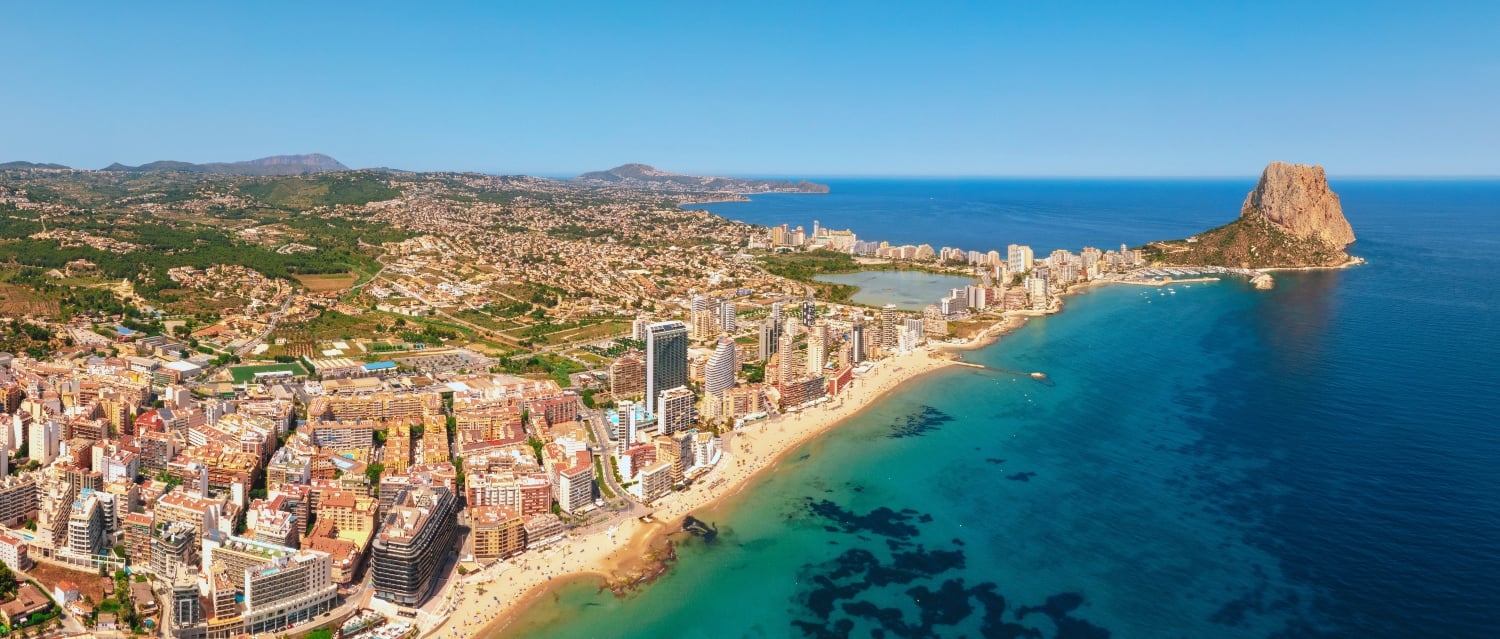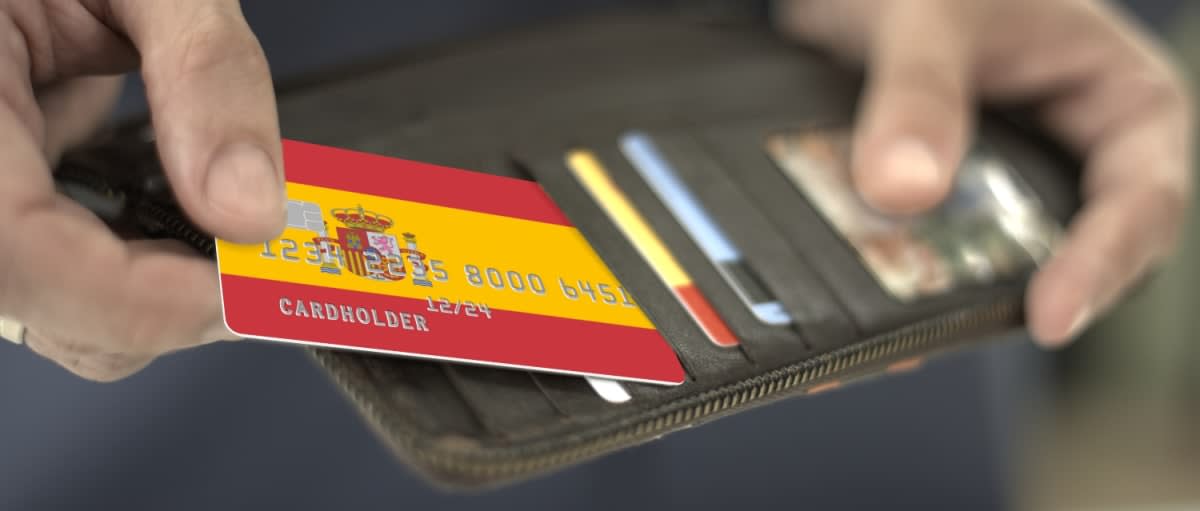With year-round sunshine, excellent transport links and property prices that stretch further than you might expect, the Costa Blanca continues to be one of the most rewarding places to buy in Spain.
From the charming old towns of Altea and Dénia to the lively beaches of Torrevieja and the vineyards of Moraira, the Costa Blanca has something for every type of buyer. It’s a region where retirees find peace, families build holiday traditions and savvy investors spot long-term potential. In this guide, we’ll show you how to make it happen – from picking the right location to understanding what you can afford and the steps to take to secure your new home.
Download the Spain Buying Guide
Contents
Why buy in the Costa Blanca?
With over 200 kilometres of Mediterranean coastline, the Costa Blanca (meaning “White Coast”) has long been a favourite among British, Dutch, Scandinavian and German buyers. According to Spanish authorities, more than 400,000 foreigners are registered as residents there in 2025 – and many more own second homes.
What draws people in? Sunshine for one. The Costa Blanca is officially recognised by the World Health Organization as having one of the healthiest climates in the world. Combine that with around 70 Blue Flag beaches, affordable property compared to hotspots like the Balearics and excellent infrastructure – and you’ve got a region that ticks all the boxes for both lifestyle and investment.
What kinds of property can you buy?
From modern seaside apartments to countryside villas and traditional townhouses, Costa Blanca offers enormous variety. Here’s a quick comparison of the most popular property types.
| Property type | Typical features | Who it suits |
|---|---|---|
| New-build apartments | Terrace or balcony, pool access, modern kitchens | Holiday home buyers, rental investors |
| Townhouses | Located in historic centres, character features | Cultural enthusiasts, part-time residents |
| Detached villas | Private gardens, often with pools and views | Retirees, families, long-term expats |
| Golf properties | On or near golf courses, good amenities | Golfers, retirees, rental investors |
Top locations in the north and south
The Costa Blanca is commonly split into northern and southern zones, each with its own appeal.
Northern Costa Blanca
This region is known for its dramatic coastal cliffs and pine-covered hills. Popular areas include:
- Alicante city: the region’s capital, full of life, history and excellent transport links. Ideal for those seeking a blend of city and sea.
- Dénia: a historic coastal town with a ferry port to Ibiza. Property from €150,000 for a two-bedroom apartment.
- Moraira: a peaceful fishing village with vineyards and world-class restaurants. €200,000 for a two-bedroom apartment and villas from €400,000.
- Calpe: known for its culinary scene and high-rise apartments with sea views. Prices start around €150,000.
- Altea: cobbled streets, art galleries and hillside villas. Apartments from €150,000 and villas from €300,000.
- Benidorm: skyscraper skyline and lively nightlife. High-rise apartments from €120,000 and luxury sea-view homes in developments like Intempo Tower for €500,000 to €1m+.
Southern Costa Blanca
Flatter and more arid, the southern coast is warmer and offers even more affordability. Key areas include:
- Torrevieja: a popular expat hotspot with beaches and salt lakes. Apartments from €100,000.
- Orihuela Costa: a collection of beach resorts including La Zenia and Cabo Roig. Two-bedroom apartments cost between €100,000 and €200,000, with villas from €300,000.
- Guardamar del Segura: pine forests and sand dunes, with property starting around €150,000 for a two-bedroom apartment.
- Rojales: known for cave houses and golf. Prices for a two-bedroom apartment start at €100,000.
- Algorfa: a quiet village with easy access to golf and countryside. Apartments from €70,000, villas from €300,000.
Search homes for sale in Spain
Costa Blanca property price guide
Here’s a quick snapshot of what your money might get you in different parts of the Costa Blanca:
| Location | Two-bedroom apartment | Detached villa |
|---|---|---|
| Torrevieja | €100,000+ | €300,000+ |
| Moraira | €200,000+ | €400,000 to €1m+ |
| Calpe | €150,000 to €300,000 | €300,000 to €1m+ |
| Rojales | €100,000+ | €200,000 to €400,000 |
| Altea | €150,000+ | €300,000+ |
Steps to buying property in the Costa Blanca

1. Do your research
Use online listings to understand what’s available for your budget. Narrow down your preferred towns and decide on key features like proximity to beaches or golf.
2. Build your team
Choose a bilingual estate agent with local knowledge. Appoint an independent Spanish-speaking lawyer and a currency specialist such as Smart Currency Exchange. You may also want mortgage or financial advice.
3. Book a viewing trip
Spend time exploring your shortlist of properties in person. Check local amenities, transport and accessibility between options.
4. Make your offer
Once you’ve chosen a property, your agent will submit your offer. If accepted, you’ll pay a reservation fee and sign a reservation contract.
5. Survey and legal checks
Although not compulsory, consider commissioning a property survey. Your lawyer will carry out due diligence and coordinate with the notary.
6. Complete the purchase
Pay a deposit (usually 10%), sign the purchase contract and fix your exchange rate to avoid currency losses. Finalise the sale by signing the escritura pública and paying all applicable taxes and fees.
Speak to a Spain property expert
Costa Blanca weather and lifestyle
The Costa Blanca has over 300 days of sunshine each year, with July and August seeing average highs of 29°C and sea temperatures around 25°C. Even in winter, daily highs hover around 16°C, and sunshine is still common.
November tends to be the wettest month, though rainfall is modest by UK standards – typically less than 45 millimetres for the month.
Getting there and getting around
Alicante–Elche Miguel Hernández Airport airport serves the entire region and is just nine kilometres from the city centre. Year-round flights operate from most major UK and European airports, with journey times of around three hours.
No car? No problem. The C6 bus runs every 20 minutes from the airport into Alicante, with other services to resorts like Calpe and Benidorm. Trains, buses and taxis are all well integrated.
If you prefer to drive from the UK, expect an 18-hour journey from a Channel port or take the train with an overnight stop in Barcelona.
FAQs about buying property on the Costa Blanca
Expats are spread right across the Costa Blanca, but the most popular areas include Alicante city, Torrevieja, Orihuela Costa, Benidorm, Altea, Dénia and Moraira. The northern Costa Blanca tends to attract buyers looking for scenic hillsides and traditional towns, while the south is home to larger expat communities and a more affordable property market.
When buying property in the Costa Blanca, you’ll usually pay a transfer tax (Impuesto de Transmisiones Patrimoniales, ITP) of 10% on resale homes, depending on the property value. For new-builds, VAT (IVA) is charged at 10% plus an additional 1.5% stamp duty. You’ll also need to budget for notary, legal and registry fees.
Living in the Costa Blanca is generally more affordable than in other parts of Spain such as Barcelona or the Balearics. Everyday costs like groceries, eating out and transport are reasonable, and property prices remain accessible, especially in the south. Many retirees and families find they can enjoy a high quality of life at a lower cost than in the UK.
You might also like:








